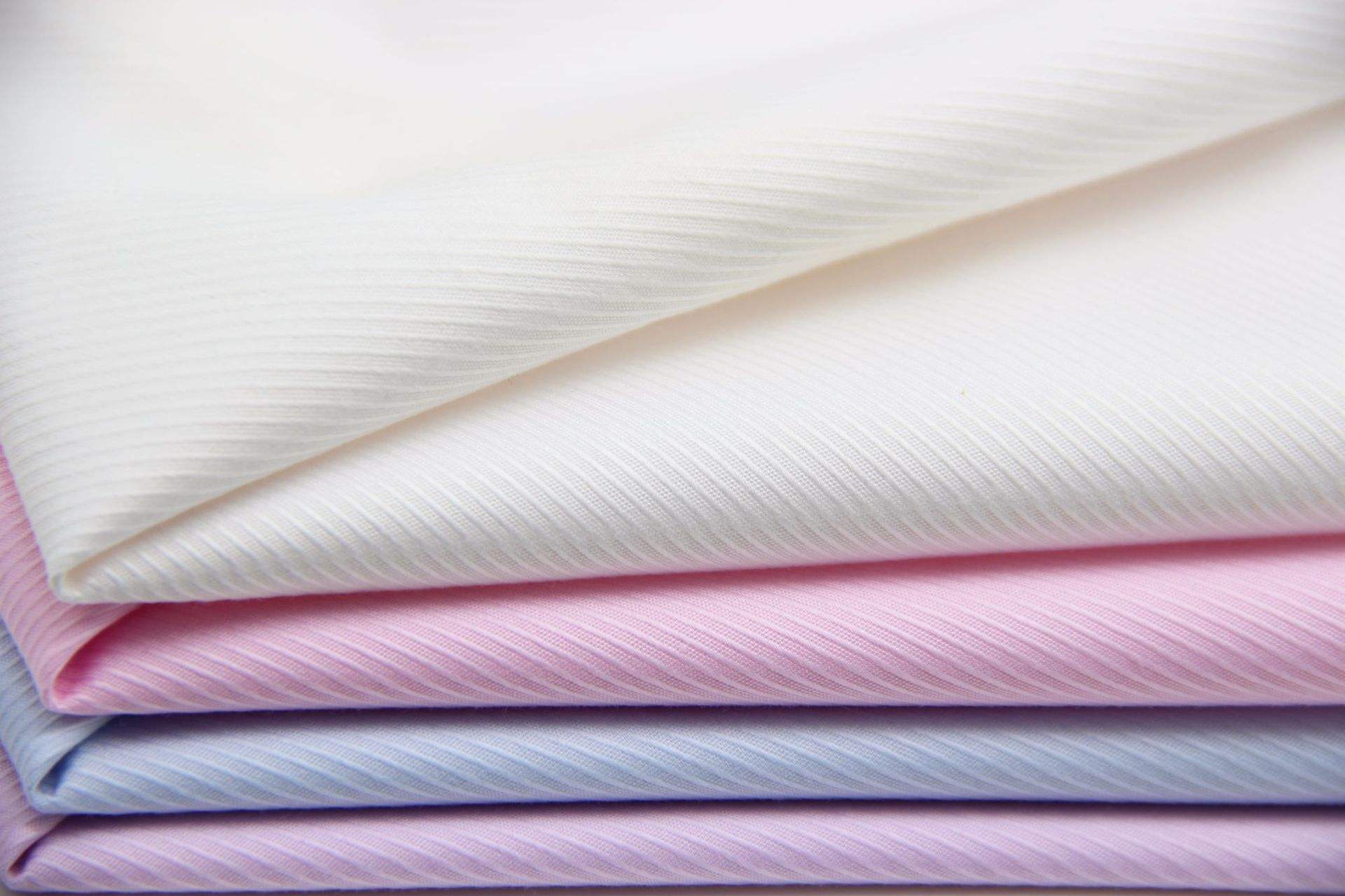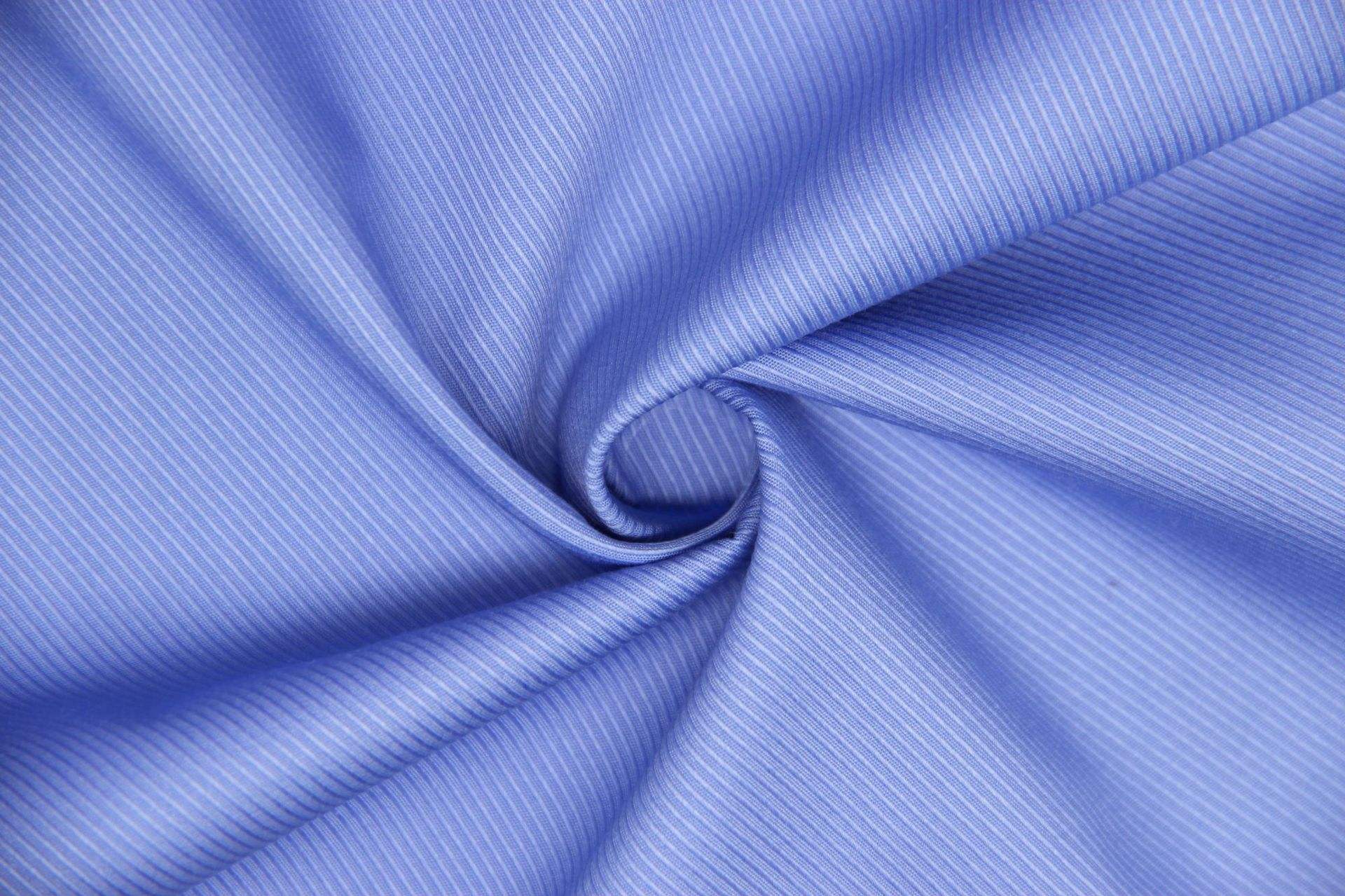Polyester-cotton blended fabric is a variety developed in China in the early 1960s. This fiber is stiff, smooth, fast drying and wear resistant. It is popular among most consumers. Polyester-cotton fabric refers to the blended fabric of polyester fiber and cotton fiber, which not only highlights the style of polyester but also has the advantages of cotton fabric.
Performance characteristics of polyester:
As a new differentiated fiber material, polyester fiber has the features of high strength, large modulus, small elongation and good dimensional stability, etc. It has soft texture, good cohesive force, gentle luster and a certain core warming effect. The moisture absorption of polyester is poor. And under general atmospheric conditions, the moisture regain is only about 0.4%. So it is hot and stuffy to wear pure polyester fabric. But polyester fabric is easy to wash and quick-drying, which has the good name of “washable and wearable”. Polyester has higher modulus, which ranks only second to hemp fiber, and has good elasticity. Therefore, polyester fabric is stiff and anti-wrinkling. It is stable in size and has good shape retention. Polyester has good abrasive resistance, which is next only to nylon. But it is liable to pilling and the balls are not easy to fall off.
Performance characteristics of cotton:
The cross section of cotton fiber is irregularly round waist with midplane inside. At the longitudinal end are closed tubular cells, thicker in the middle and thinner at both ends. Natural crimp is a special morphological characteristic of cotton fiber. Cotton fiber is alkali resistant but not acid resistant. It has strong absorption. Under standard condition, the moisture regain of cotton fiber is 7~8%. After being process for 8 hours at the temperature of 100℃, its strength is not influenced. At 150℃, cotton fiber will decompose, and at 320℃, it will burn. Cotton fiber has a low specific resistance, which is not easy to generate static electricity in the process of processing and using.
The superiority of polyester-cotton blends:
Polyester-cotton blended fabric not only emphasizes the style of polyester, but also has the advantage of cotton. Under dry and wet conditions, it has good elasticity, good abrasive resistance, stable size and small shrinkage. It is stiff, not easy to crease, easy to wash and fast drying. It has bright luster. The hand feeling is smooth, stiff and elastic. After hand wiping, the crease is not obvious and recovers fast. But it also has the same shortcomings as chemical fiber that the friction part is easy to fluff and pilling. Polyester-cotton blended fabric has thick and soft hand feeling. It is more comfortable to wear. It can retain its shape after repeated wash without creasing or shrinking.
Polyester-cotton and Cotton-polyester:
Polyester-cotton and cotton-polyester are two kinds of different fabrics.
1.Polyester-cotton (TC) fabric is defined as more than 50% polyester and less than 50% cotton.
Advantages: The luster is brighter than pure cotton cloth. Handle is smooth, dry and stiff. It is uneasily crinkly. And the more polyester, the less likely the fabric is to wrinkle.
Disadvantages: The skin-friendly property is worse than pure cotton fabric. It is less comfortable to wear than pure cotton fabric.
2.Cotton-polyester (CVC) fabric is just the reverse, which is defined as more than 50% cotton and less than 50% polyester.
Advantages: The luster is a little brighter than pure cotton cloth. The cloth surface is flat and clean without hard waste or impurities. The handle is smooth and stiff. It is more anti-wrinkling than pure cotton cloth.
Disadvantages: The skin-friendly property is worse than pure cotton fabric. It is less comfortable to wear than pure cotton fabric.
Post time: Jun-27-2022



